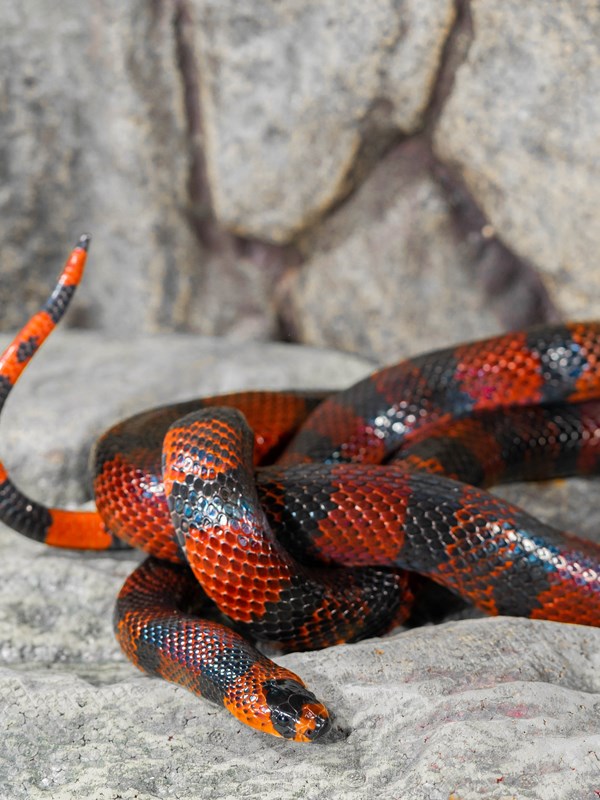
Honduran Milk Snake
Scientific Name Lampropeltis triangulum hondurensis
Native To Honduras, Nicaragua and Northeastern Costa Rica
Habitat Tropical areas
Diet Carnivore: snakes, rodents, lizards, birds and eggs
Size and Age Up to 1.5 m (5 ft) long; lifespan up to 20 years
Natural History
Milk snakes got their name from an old belief that they drank milk from cows. People actually believed this because milk snakes were frequently found in barns filled with dairy cows, where they were most likely drawn by the rodents that lived inside. Milk snakes are also mistaken for the venomous coral snake. Their bright red colouring is used to trick predators into thinking the snake is venomous—a phenomena known as mimicry.
Least Concern

Conservation Status
A milk snake's greatest threat is being run over by cars on the road. They are considered valuable for controlling rodent populations around cities and towns.
Interesting Facts
- Milk snakes use quick, jerky movements to startle predators with their bright colours.
- The incubation temperature of their eggs dictates the gender of the hatchlings. Warmer temperatures will hatch males, while cooler temperatures hatch females.
- Milk snakes will eat other snakes.
